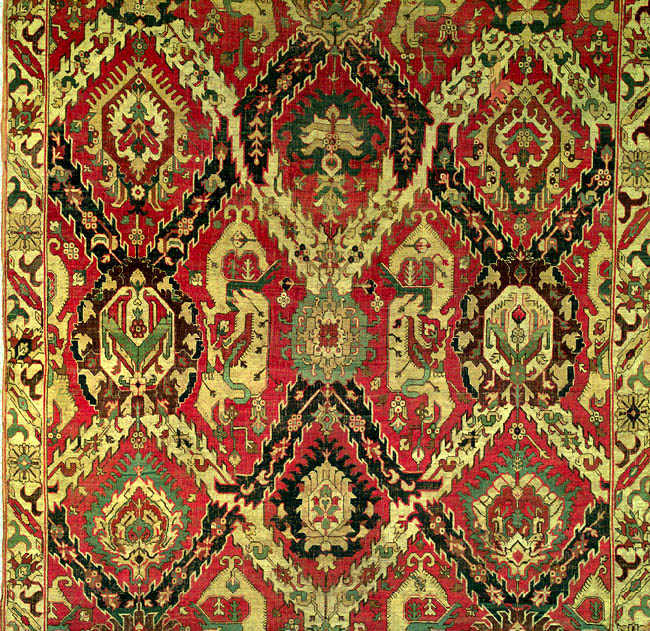|
Dragon Rug (detail), late 17th century
Caucasus (Kuba)
Wool pile on cotton and wool foundation; 151 x 90 in. (383.54 x 228.6 cm)
The James F. Ballard Collection, Gift of James F. Ballard, 1922 (22.100.122)
This rug represents the village carpet-weaving tradition of the Caucasus
that continued contemporaneously with the court production of Ottoman Turkey
and Safavid Iran. While rugs produced in royal workshops had flowing, floral
patterns, those from provincial weaving centers retained a strongly
geometric character.
The detail illustrated here shows a highly stylized dragon that serves as
the basis for the name of the pattern type.
 |

